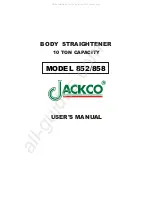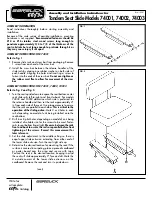
Operation
22
Testboy
®
TV 441
Test procedure
Measurement of the earth resistance is performed via constant current conversion with a test current frequency of c.
800 Hz and a current of 3 mA.
The earth voltage is measured via mean value rectification.
Operation
Danger
|
Do not apply a voltage higher than AC 230 V to the test port when measuring the earth voltage.
|
When measuring the earth resistance, a voltage of c. 50 V is measured between connections
E and S or the connections E and C. Protect yourself against an electric shock.
Check the battery charge before using the measuring instrument. If the display shows
after activation of the
measuring instrument, it is necessary to replace the batteries (see chapter “Changing the batteries”).
Measuring the earth voltage
Turn the rotary switch to VE. Connect the test leads to the jacks E and S and connect the other ends of the test
leads with the voltage supply. The presence of voltage is registered on the LC display.
Two pole-measurement of the earth resistance
Instead of the auxiliary earthing rod, this procedure uses the earth poles present as an auxiliary earthing rod, such
as any metal in the ground (water lines etc.) the joint earth of the mains power supply or lightening conductors of
high buildings.
(1) Test port diagramme
(2) Measuring the earth voltage
Before measuring the earth resistance, it is first necessary to measure any earth voltage present, as voltages over
10 V can cause serious errors is the measurement of the earth resistance. In this case, disconnect the
measurement object from the power supply and wait until the earth voltage falls.







































